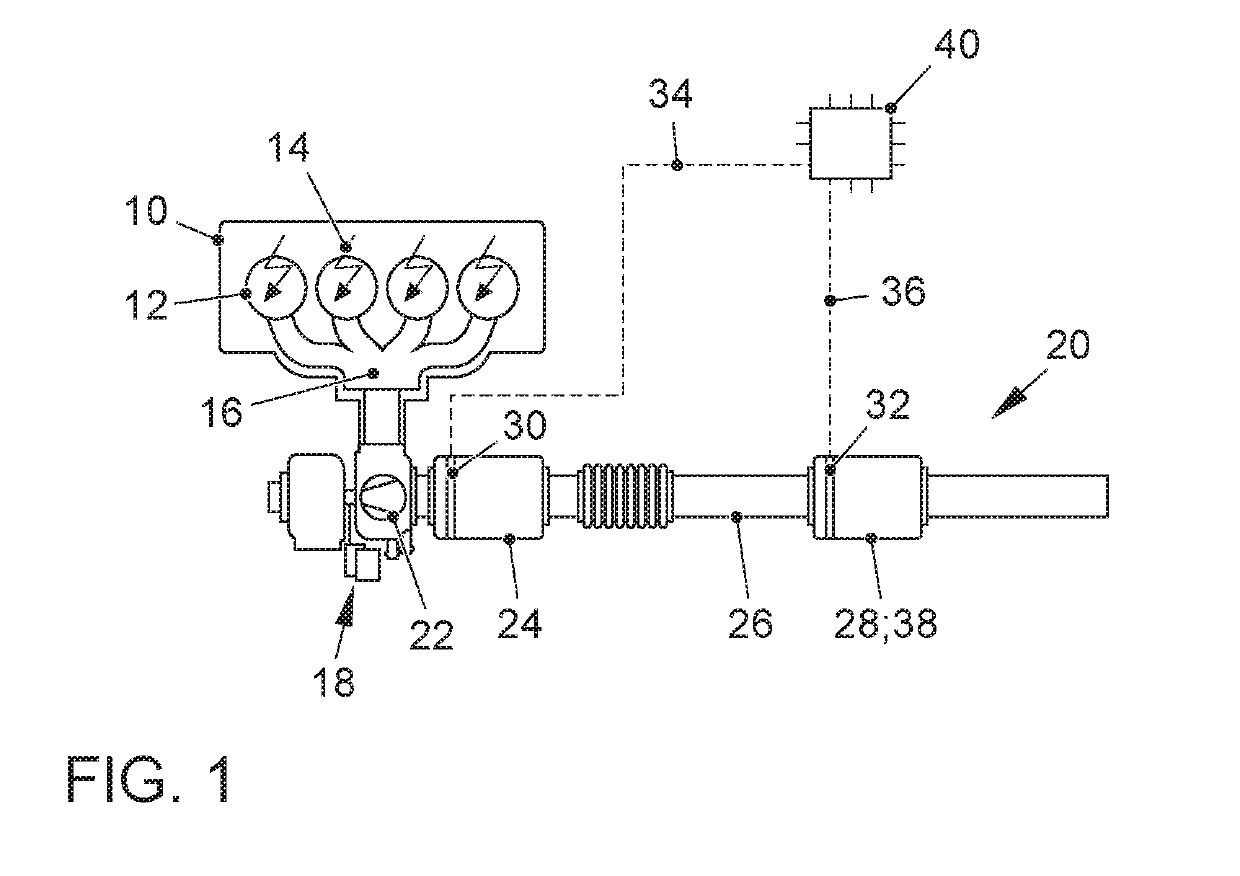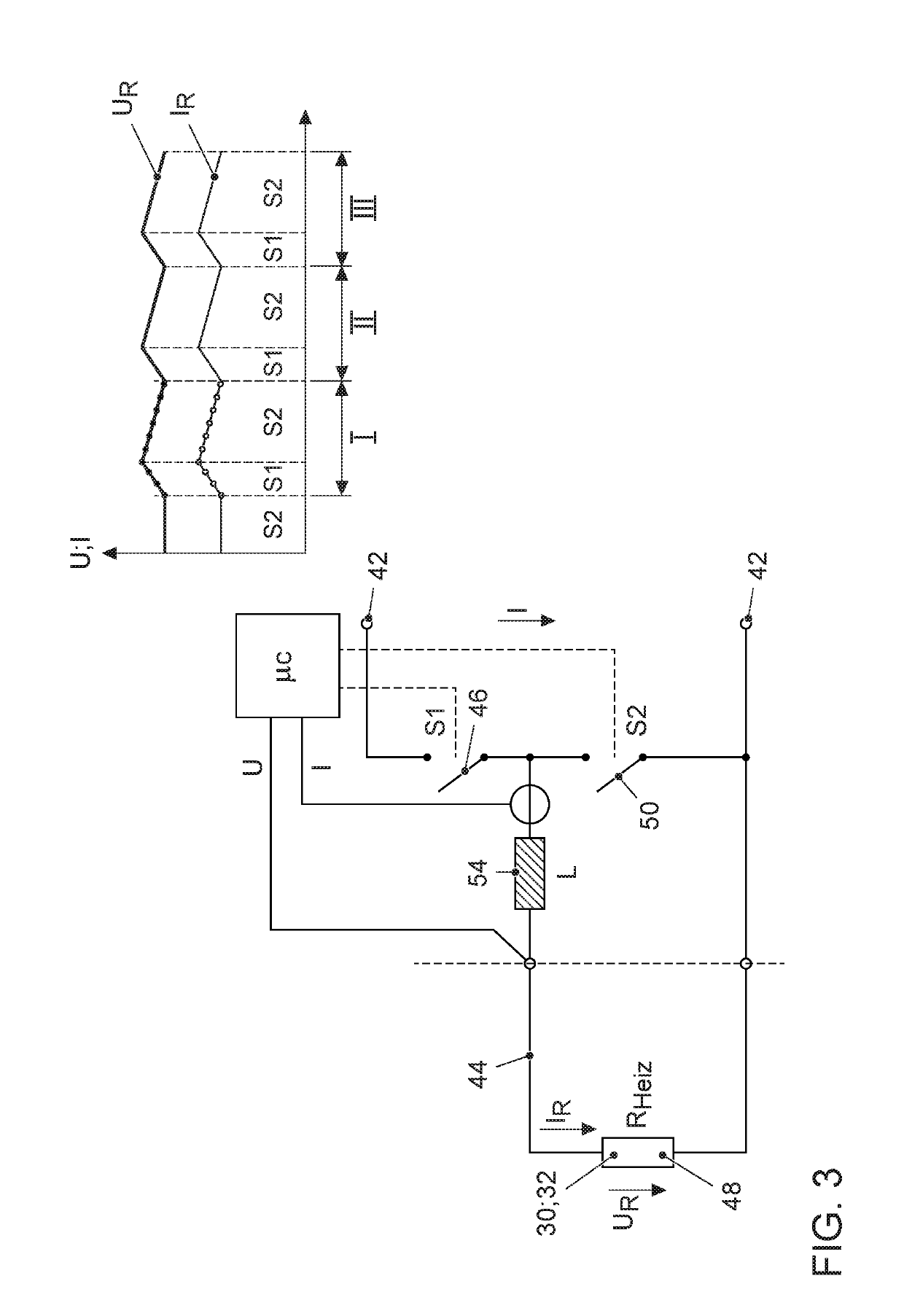Method for determining the temperature of an electrically heatable catalytic converter
a technology of electrical heat transfer and catalytic converter, which is applied in the direction of heat measurement, instruments, machines/engines, etc., can solve the problems of inadequate conversion of pollutants in the cold start phase, limited catalytic converter functioning, and risk of thermal damage to the catalytic converter, so as to improve the determination of the component temperature
- Summary
- Abstract
- Description
- Claims
- Application Information
AI Technical Summary
Benefits of technology
Problems solved by technology
Method used
Image
Examples
Embodiment Construction
[0031]FIG. 1 shows an internal combustion engine 10, the exhaust outlet 16 of which is connected to an exhaust gas system 20. The internal combustion engine 10 is preferably designed as a spark ignition internal combustion engine 10 according to the Otto principle, and has a plurality of combustion chambers 12, on each of which at least one spark plug 14 for igniting an ignitable fuel-air mixture is situated. Alternatively, the internal combustion engine 10 may be designed as an auto-ignition internal combustion engine according to the Diesel principle. The internal combustion engine 10 is preferably designed as an internal combustion engine 10 that is supercharged by means of an exhaust gas turbocharger 18. Alternatively, the internal combustion engine 10 may be designed as a naturally aspirated engine that is not supercharged, or as an internal combustion engine 10 that is supercharged by means of a compressor or an electric compressor. The exhaust gas system 20 includes an exhaus...
PUM
 Login to View More
Login to View More Abstract
Description
Claims
Application Information
 Login to View More
Login to View More - R&D
- Intellectual Property
- Life Sciences
- Materials
- Tech Scout
- Unparalleled Data Quality
- Higher Quality Content
- 60% Fewer Hallucinations
Browse by: Latest US Patents, China's latest patents, Technical Efficacy Thesaurus, Application Domain, Technology Topic, Popular Technical Reports.
© 2025 PatSnap. All rights reserved.Legal|Privacy policy|Modern Slavery Act Transparency Statement|Sitemap|About US| Contact US: help@patsnap.com



